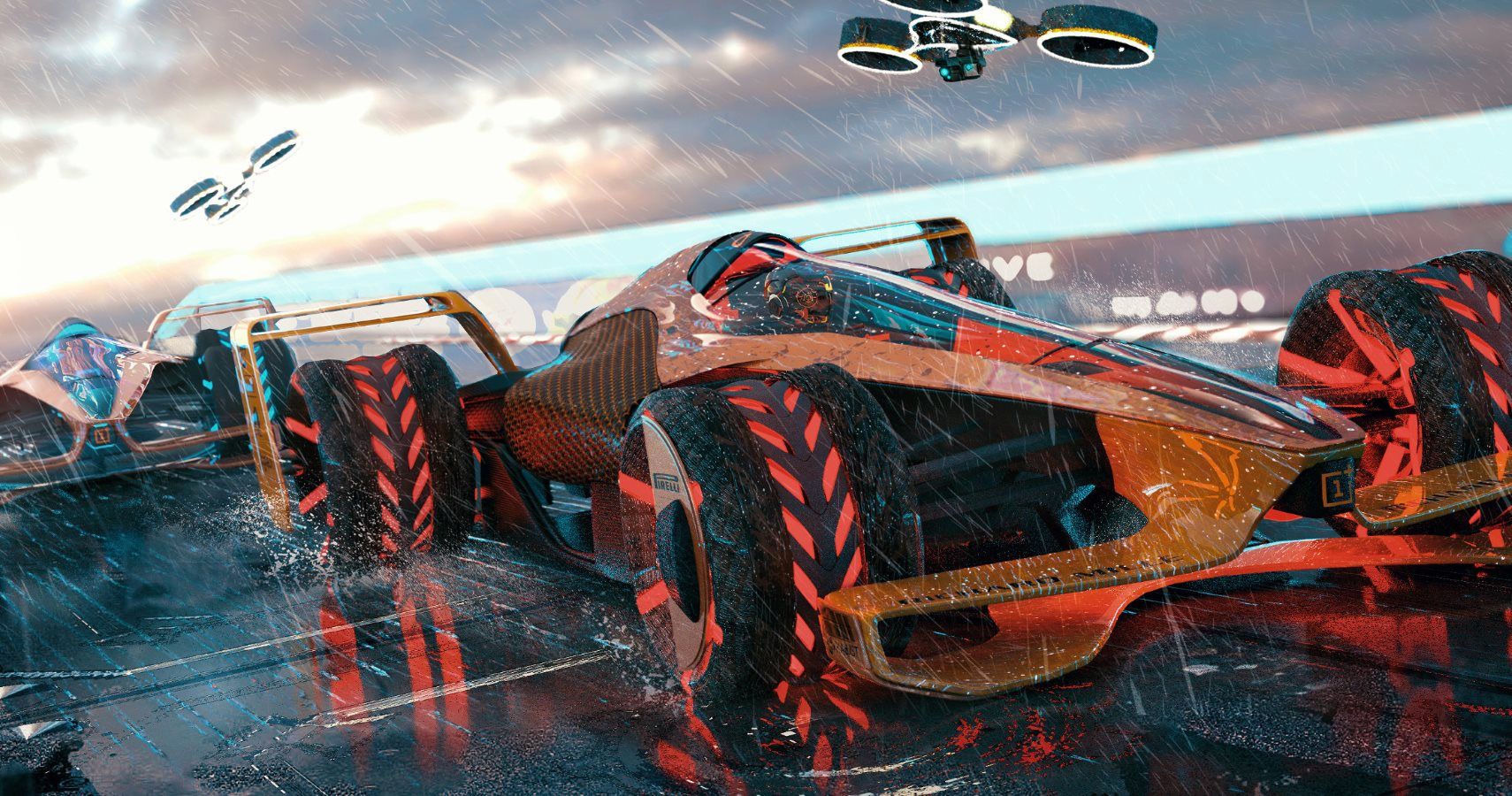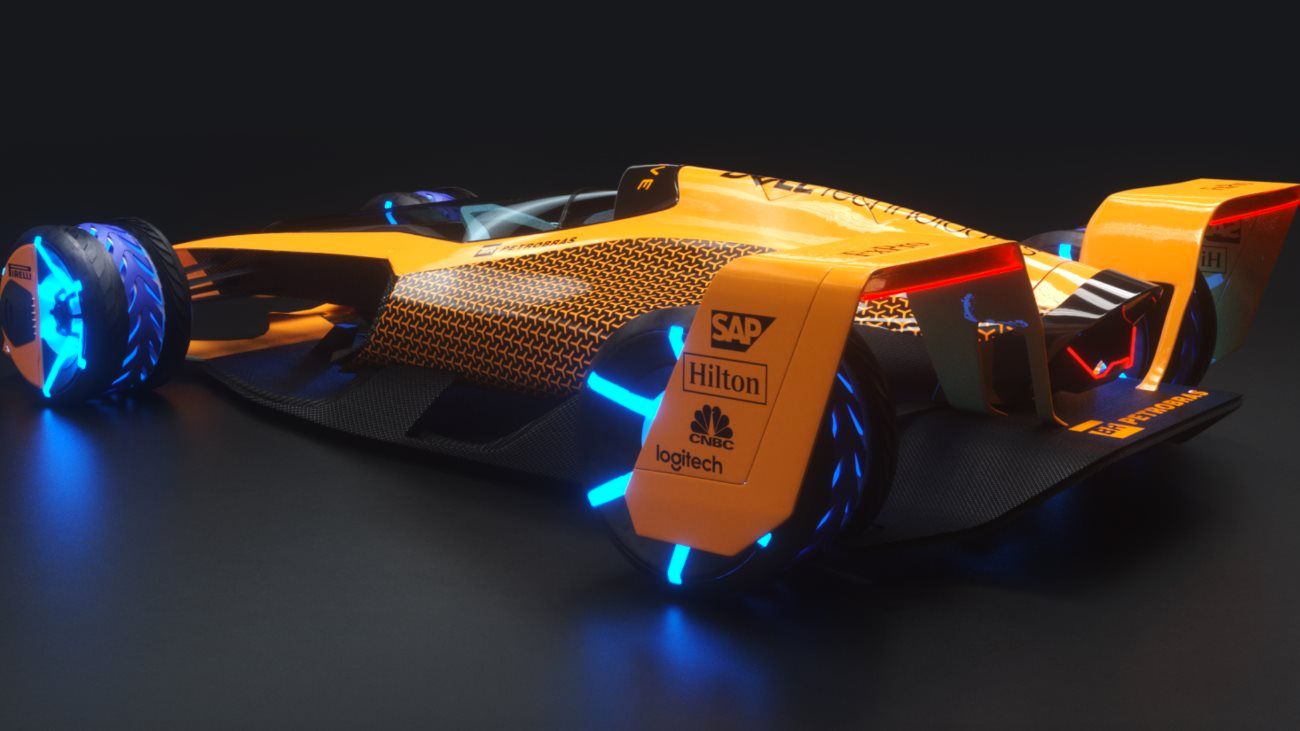McLaren has a pretty wild vision for the future of Formula One racing.
We live in changing times. Electric, self-driving vehicles that charge entirely wirelessly were all pie-in-the-sky ideas just a few short years ago, and now they’re becoming reality. So McLaren Racing did what they always do and take it to its most utmost extreme.
What we wind up with looks straight of a science fiction film.
In their vision of what F1 will look like in the year 2050, McLaren thinks that future race cars will still look vaguely like a Formula One car does today, with open wheels and a light, low-slung, arrow-like body. But they’ll be entirely battery-driven, assisted by exotic aerodynamic elements, have an AI to help the driver, and zoom along custom tracks at speeds of up to 310 mph.
Obviously, going that fast in a pack of fencing racers will require a lot of advanced controls to prevent the driver from turning into a red smear on the asphalt. An artificial intelligence co-pilot will help the driver maintain control of the car, offer racing strategies, and even read the driver’s emotions. This will cause the car to glow different colors: red for angry, and blue for joyous or victorious.
Advanced aerodynamic elements will include retractable side pods that deploy for braking or additional drag and then retract for maximum velocity. Downforce is maintained via underbody elements and diffusers.
RELATED: MCLAREN 600LT SPIDER OFFICIALLY REVEALED AND IT'S FAST
Everything will be electric and recharge wirelessly. This means instead of a pit crew dragging out a fuel line, cars will make pit stops to recharge wirelessly. Batteries will recharge to 10-50% in between 10-30 seconds, and the car might not even need to stop--simply slowing down in the pit lane will allow a minimum charge, allowing for late-race strategies.
Or the pit lane might disappear altogether and be replaced by charging lanes or zones.
Driver’s suits will also change to be more like a modern-day fighter pilot, including inflatable air bladders to keep the driver from blacking out due to excessive G-forces. Tracks will be redesigned with steeper curves and whole cities might be taken over for massive city-wide races.
And of course, holographic projections and drones will capture every second of the action.
It sounds straight out of a science fiction video game, but then again, a lot of what we take for granted would sound the same to someone 30 years ago. We’ll have to wait and see if McLaren is right about this one.


